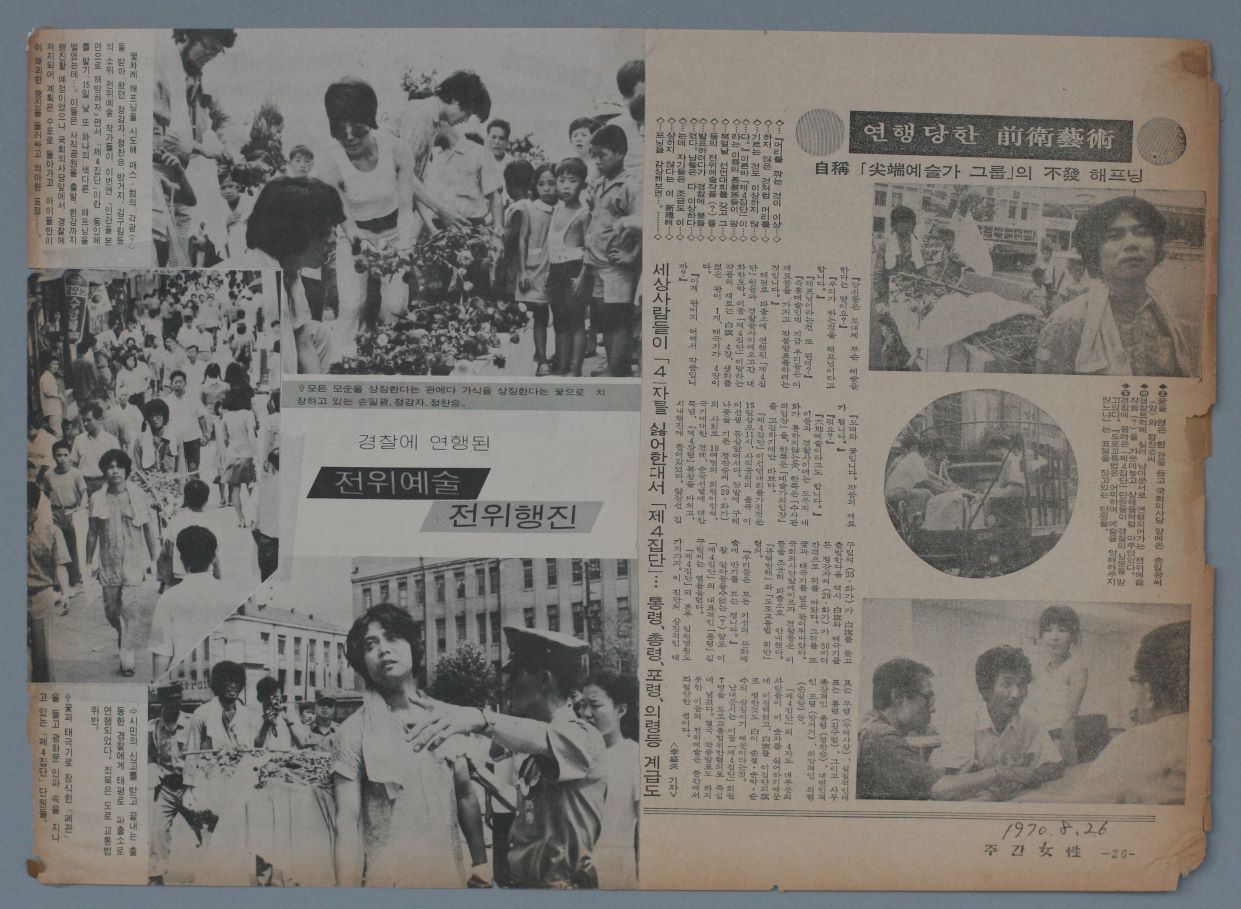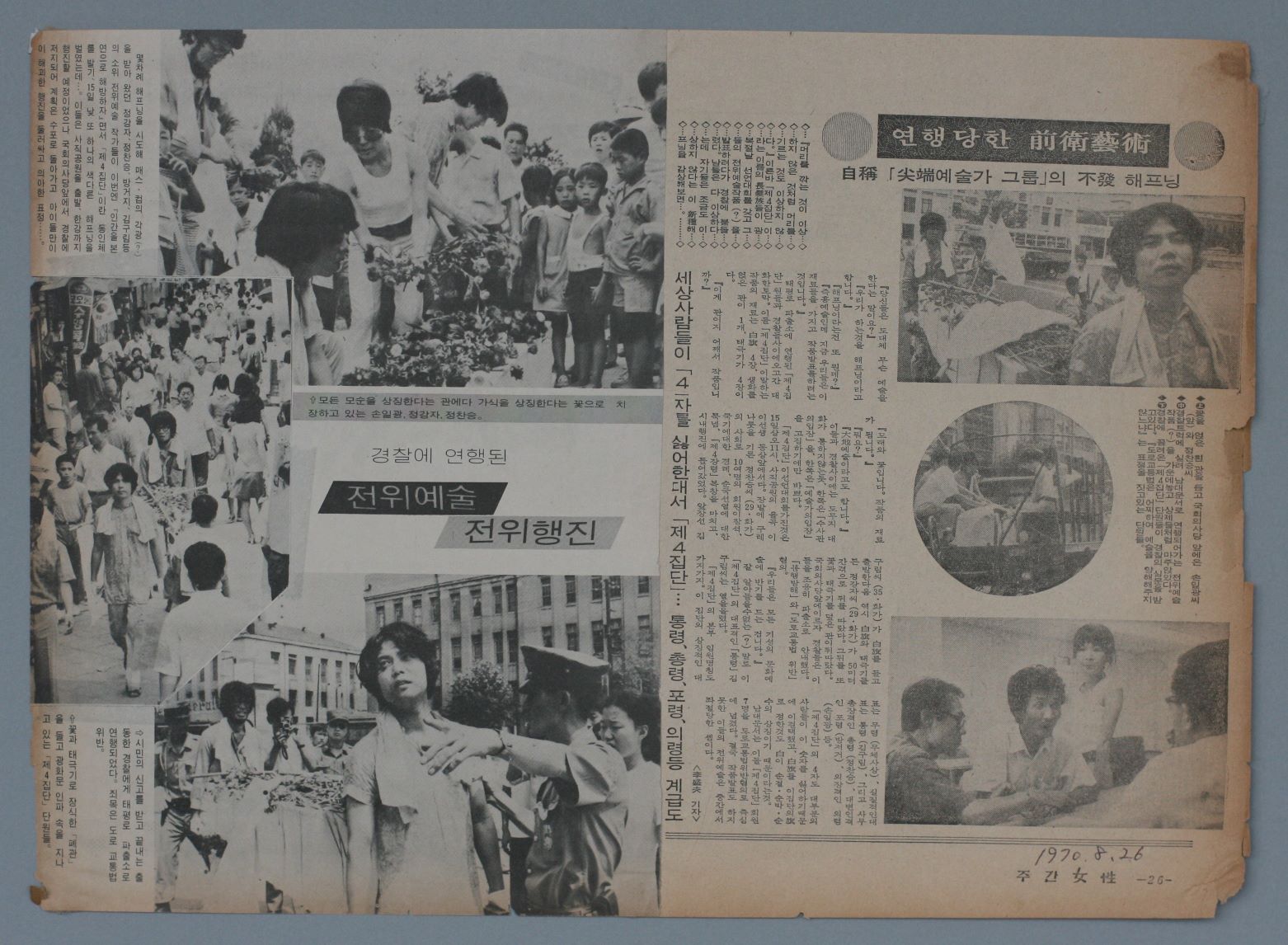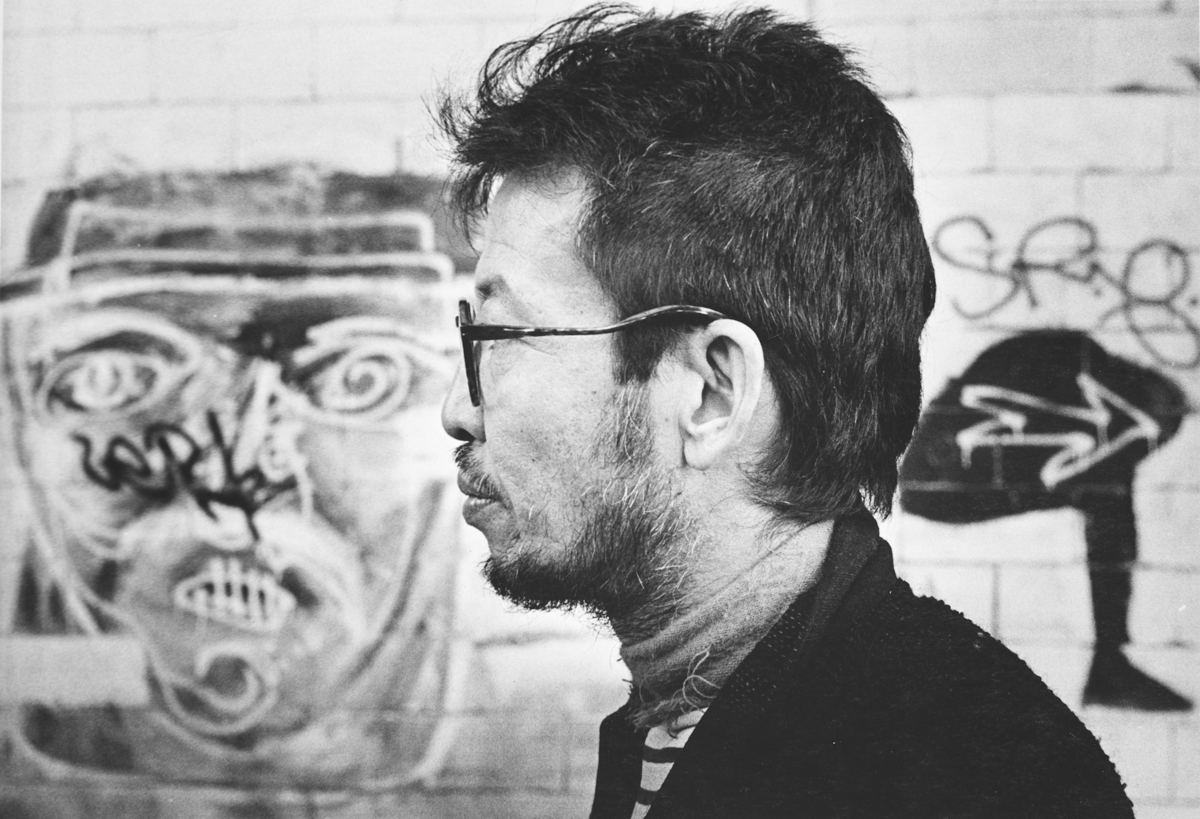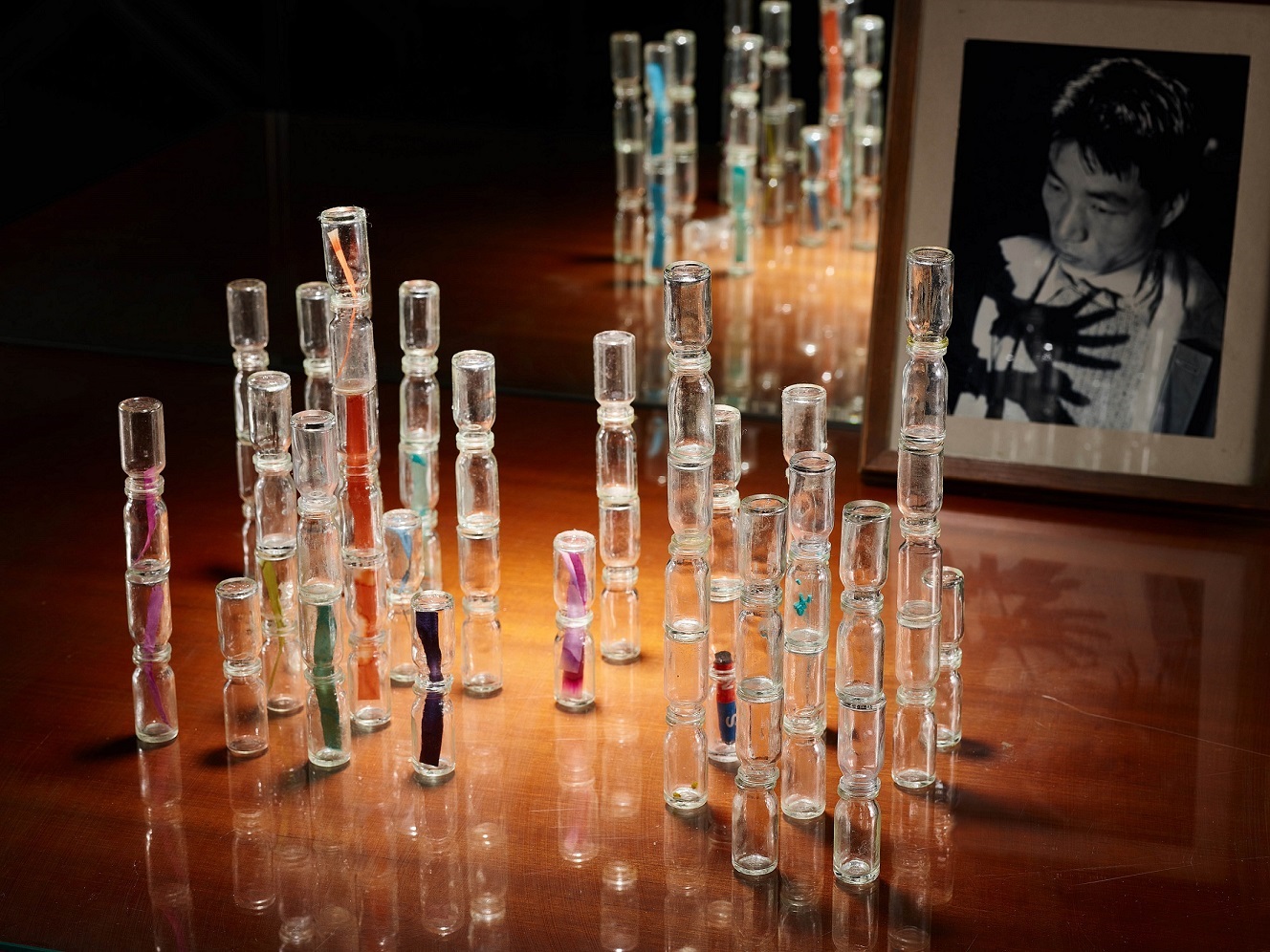
The Fourth Group, Funeral Ceremony of the Established Art and Culture (August 15, 1970), Jugan Yeoseong, August 1970. Image provided by Kim Kulim
Intangible Art
Intangible art (muche yesul) is an art concept espoused by The Fourth Group, the avant-garde cultural organization in South Korea, formed in June 1970. The members of The Fourth Group, whose activities encompassed arts, press, popular culture, and religion, sought to create a total art that synthesized theater, art, dance, and literature. They hoped to revive a pure Korean culture and become a global cultural force. According to their creed, intangible art is derived from the core of Laozi’s philosophy, “the political idea of abandoning the will to dominate and being ruled by unconditioned nature.” In other words, the term “being intangible” means abandoning the Western way of thinking that separates the mind from the body, the unification of politics, economy, society, culture, and science into art, and returning all existing independent fields to a state of “nothingness” and making the boundaries of each field disappear. To materialize such a concept of being “intangible,” the members of The Fourth Group introduced the Western avant-garde art of the happening and internalized it into their intangible art, which, as its name implies, is art without form and art that leaves no results. The first solo exhibition of Jung Kangja, a member of The Fourth Group, which consisted exclusively of her happening, was also entitled Intangible (National Public Information Center, 1970).
* Source: MMCA
Related
-

Funeral Ceremony of the Established Art and Culture
Funeral Ceremony of the Established Art and Culture is a happening performed by leading members of the total art collective The Fourth Group on August 15 in 1970 in downtown Seoul. After holding its founding ceremony on June 20 in 1970 at the Sorim Coffee Shop in Euljiro, Seoul, The Fourth Group performed the pantomime-style happening Street Theatre on July 1 in 1970 in Myeongdong. On the same day, Ko Ho, a theater actor from the Ejeotto Theater Company, and Chung Chanseung performed happenings at shop windows, on pedestrian overpasses, and in front of the National Theatre of Korea, criticizing capitalism for alienating contemporary people. However, they were arrested by the police for violating the Road Traffic Act. Nevertheless, the members of The Fourth Group were undeterred and staged another happening, Funeral Ceremony of the Established Art and Culture, on National Liberation Day. At 11 AM, Kim Kulim, Chung Chanseung, Bang Taesu, Son Ilgwang, Jung Kangja, and others gathered in front of the statue of Yi Yi in Sajik Park, paid their respects to patriotic martyrs, and then set off toward the Independence Gate while carrying a coffin covered with a white cloth and the Korean national flag Taegeukgi, over which flowers were placed. At fifty-meter intervals, Kim Kulim carrying a white flag symbolizing the intangible thought of The Fourth Group, marched in front, followed by Jung Kangja holding a white flag and Taegeukgi, Son Ilgwang and Yim Jungung carrying the coffin, and Chung Chanseung holding the Taegeukgi. In commemoration of the 25th anniversary of Korea’s liberation from Japan, they made their way under the First Hangang Bridge to criticize the world dominated by Japanese collaborators and oust cultural figures who had failed to depart from outdated ideas. They reached Gwanghwamun Gate and the National Assembly, where they were taken by the police and handed over to a summary trial. The charges against them were “obstructing traffic” and “violating road traffic laws.” Subsequently, on August 28, the government arrested hundreds of young people through a large-scale crackdown on long-haired people. Soon after, it announced, “a plan to eliminate the decadent social atmosphere” and named the artists of The Fourth Group as “degenerate artists, decadent practitioners, and criminals.” The members of The Fourth Group, who were promising avant-garde artists, were instantly labeled as outcasts, and this put an end to the history of happening performances. Funeral Ceremony of the Established Art and Culture proved to be a decisive factor in the dissolution of The Fourth Group.
-
The Fourth Group
A youth artist group that sought the liberation of humanity, the independence of Korean culture, and resistance toward the establishment, particularly through the expressive method of Happening. The Fourth Group celebrated its inauguration on June 20, 1970, which was published in the magazine Sunday Seoul on June 28, 1970. Although the Fourth Group did not have a strong political ideology, it was an artist group that aspired to create new art in relation to everyday lives and popular culture. They considered Happening as an anti-art weapon to challenge the government, the prestigious fine art community, and popular culture. This stance provoked intensive controversy and the interest of a range of artists. The group was active for just over two months before government authorities shut down it in August 1970. The group was criticized for a lack of seriousness and fighting spirit, but it was also the first art group that combined avant-garde approaches with a popular sensibility to create a uniquely Korean version of sub-cultural artistic production.
-

Chung Chanseung
Chung Chanseung (1942-1994) was a painter, performance artist, and installation artist. He was a pioneering figure who led experimental art in Korea in the 1960s and 1970s. He graduated from the Western Painting Department at Hongik University in 1965. After graduation, he was active in the artist collective Non Col, which he founded while still in college along with Kang Kukjin, Kim Inwhan, Nam Yeonghui, Yang Cheolmo, Choi Taeshin, and Han Youngsup. He also presented abstract paintings in the style of Art Informel. In 1967, he formed the Sinjeon Group, a group pursuing anti-art practices, together with Kang Kukjin, Jung Kangja, and others, and with members of Origin Society and Zero Group, he organized the Union Exhibition of Korean Young Artists. In 1968, Chung staged the happenings Transparent Balloon and Nude and Murder at the Han Riverside with Kang Kukjin and Jung Kangja. In 1969, he appeared in the experimental film The Meaning of 1/24 Second directed by Kim Kulim. In June 1970, he formed Korea’s first total art collective The Fourth Group with Kim Kulim, Bang Taesu, Son Ilgwang, and others. They presented the street happenings Street Theatre and Funeral of the Established Culture and Art. As these happenings by The Fourth Group were deemed decadent by government authorities, Chung focused on printmaking and three-dimensional works in and after the 1970s. After participating in the 1980 Paris Biennale, he moved to the U.S. a year later in 1981. Until his illness forced him to return to South Korea in 1994, Chung lived in the Greenpoint and Williamsburg neighborhoods of Brooklyn, New York and was immersed in making his distinctive junk art creations that connected metal scraps and discarded objects in a variety of manners.
Find More
-

Kang Kukjin
Kang Kukjin (1939-1992) was a leading artist in experimental art that emerged in Korean art scene from the late 1960s through the 1970s. In 1965, he graduated from the College of Fine Arts at Hongik University. In 1964, Kang Kukjin founded the Non Col, advocating a break with the established generation. He joined the Sinjeong Group in 1967 and worked in experimental art with objets, installations, and happenings. Participating in the Union Exhibition of Korean Young Artists held in 1967 along with Chung Chanseung, Jung Kangja, and others, Kang staged Happening with Vinyl Umbrella and Candle, the first performance art in Korea. In the following year, he performed Transparent Balloon and Nude and Murder at the Han Riverside. Later, Kang expanded the scope of his contemporary art by devoting himself to three-dimensional works and installations. He also led the popularization of printmaking by opening the first printmaking workshop in 1971. In the mid-1970s, he resumed painting. From then on, he produced the Rhythm series (1985) that explored Korean sentiments through repeated line drawings and the Light of History series (1989) that sought the original form of Korean beauty in historical artifacts like ancient clay figurines and Buddhist images. In 2019, the Kang Kukjin Print Award was established by the Kang Kukjin Foundation and Korean Contemporary Printmakers Association [Hanguk hyeondae panhwaga hyeophoe].
-

Experimental art
A genre of Korean art characterized by non-two-dimensional work such as sculpture, environmental installation and performance that emerged in the late 1960s and continued over the course of the 1970s. Art historian Kim Mikyung has analyzed the movement in the context of the political and social phenomena of the time and first coined the term experimental art to describe such work.






